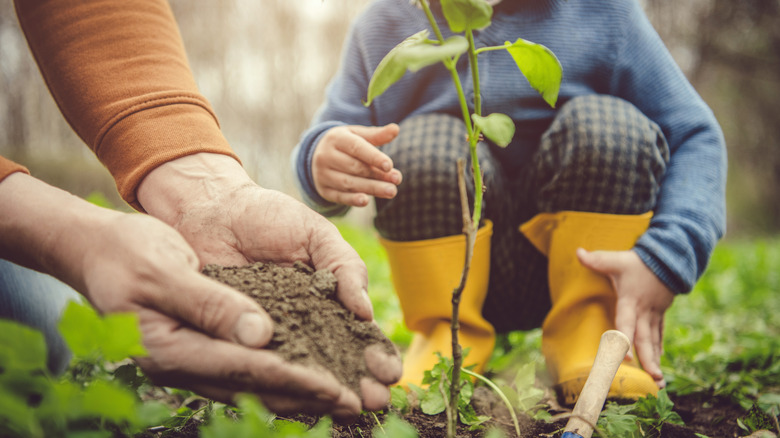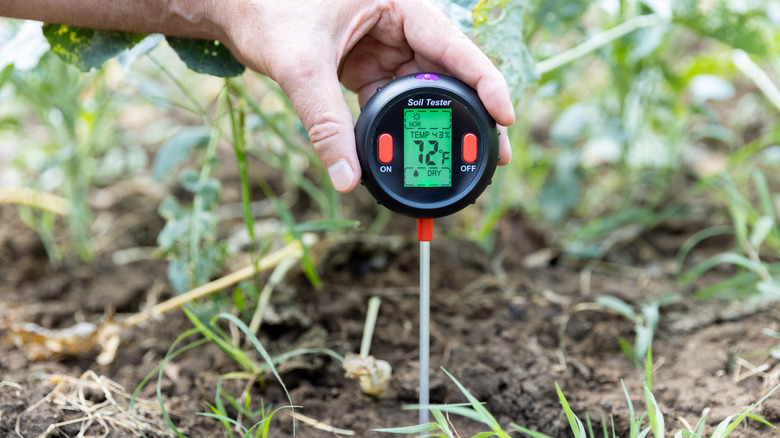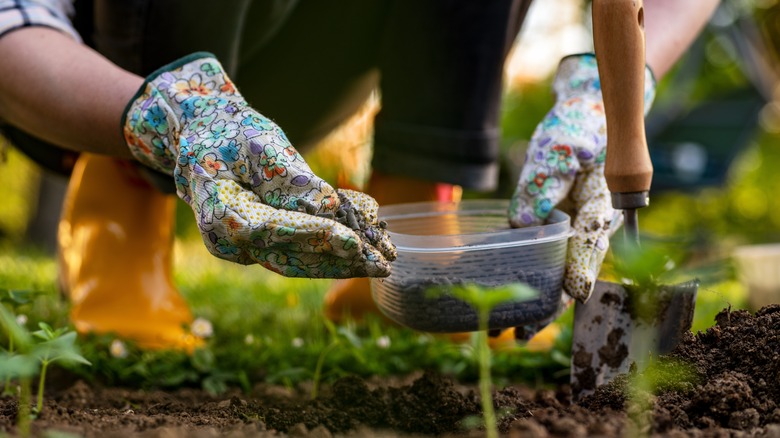How To Prep Your Yard's Soil Before Planting A Tree
A strong and healthy tree requires a solid foundation, which starts by properly preparing the soil. By investing time and effort in soil preparation, you'll create an environment that supports root development, nutrient uptake, and overall plant vitality. Adequately prepared soil provides improved drainage, prevents waterlogging, and aids in moisture retention, which prevents drought stress. It also enhances the availability of essential nutrients, fostering healthy growth and foliage.
Additionally, well-prepared soil promotes beneficial microbial activity, which aids in the decomposition of organic matter and the release of vital nutrients. It can help mitigate erosion issues, stabilize the tree's base, and promote a balanced distribution of water and nutrients throughout the root system. By amending the soil based on the specific needs of each tree species, you can create the perfect nutrient environment for that tree. Soil improvement techniques also have environmental benefits: Well-draining soil can prevent standing water and soil erosion, which helps to keep pests and diseases at bay and protects nearby water sources from sediment runoff.
Assessing the soil
To get started, get a soil test kit from the store or contact your local agricultural extension office. They can do a professional soil analysis and give you all the information you need about your soil's pH level, nutrient content, and composition. This will help determine if you need to add anything to your dirt before planting trees.
It's also important to know what type of soil you have because it directly impacts how well your tree will grow. There are three main soil types: sandy, clay, and loamy. Sandy soil is great for drainage but may need extra help retaining nutrients. Clay soil is good for water retention, but it can become compacted, so you'll need to help it drain more effectively. Loamy soil is the best type of soil for your tree, as it has just the right balance of drainage and moisture retention. One way to see if your soil drains well is to watch what happens after it rains — if there's too much water sitting, you could have slow-draining clay soil, which can harm your tree's roots.
Soil improvement techniques
Your soil testing results will let you know your soil's pH level. If the pH level of the soil is too low, you can add garden lime to raise it. If it's too high, sulfur will lower it. Ensure that the pH level is suitable for the type of tree you're planting so that it can absorb nutrients efficiently. To make sure your tree gets the best start possible, it's also a good idea to add organic matter like composted tree bark or worm casings. Spread it evenly over the planting site and thoroughly mix it into the soil. This will help enhance the soil's structure, moisture retention, and nutrient content.
If your soil is compacted, use a garden fork to loosen it up. Insert the fork into the ground and gently rock it back and forth to break up the compacted layers. This improves aeration and root penetration. If your soil retains too much water, adding sand or organic matter can help improve drainage and soil structure. By implementing these soil improvement techniques, you'll be providing a supportive environment for the roots of your tree to grow strong and healthy.


